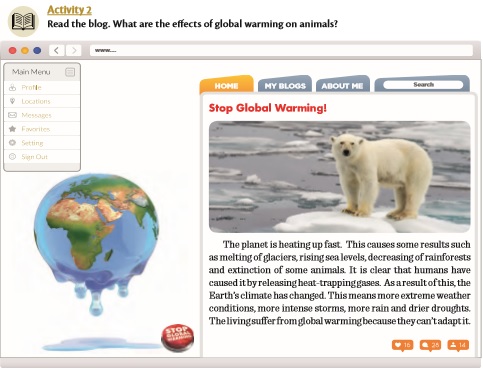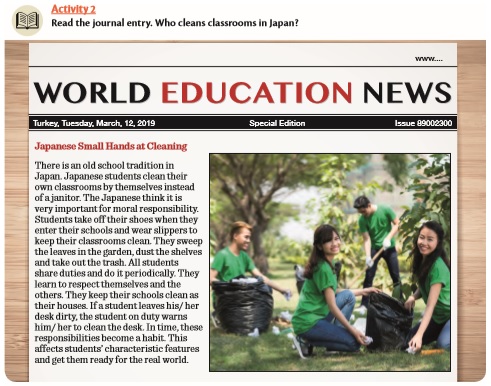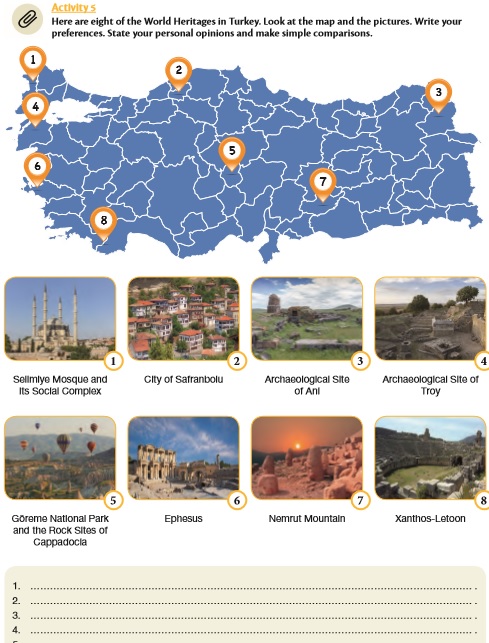This week’s webinar was centered on the subject I, personally, research about the most; gender and the gender inequality. Since we focus on the educational side of these kind of social justice issues and topics, I entirely put the emphasis on the male and female figures and didn’t research the key factors in this issue; the terms. If we, as teachers, are going to create educational environments where there would be minimal or no social justice issues, we must be aware of what we are defending or supporting to make our argument even more effective. This week’s webinar has taught a lot about gender bias, gender socialization, hidden curriculum, etc… These are maybe the concepts that everyone knows but they are not the concepts that everyone knows ‘’in detail.’’ Also, the educational materials that the webinars provide each week are extremely helpful for me to conduct a particular lesson that would address the social justice issues in my practicum site easily. For example, the short story called ‘’Paper Bag Princess’’ can be a good material to be discussed in the classroom or the teacher may even come up with his/her own ideas related to this story. It is a good material because it focuses on a female character who is powerful and strong enough to save the male character, unlike the other kind of stories where the male character is the strongest of all. So, the webinar was helpful in providing a huge opportunity for me to see the other side of teaching since nearly the most of the teachers focus on the content knowledge and forget about social justice issues or any other affective side of teaching and learning.
Actually, there are many obstacles in having a classroom where there would be no gender-related issues like gender bias at all because everyone in a nation is affected by the culture while defining the gender and gender roles. This, in time, causes some stereotypes such as defining the females’ roles as dealing with the home; washing dishes, cooking meal, etc… In my first practicum site, I asked 8th grade students a question after I introduced the unit called ‘’In the Kitchen’’. Since we were at the break and I’d just introduced them the phrases and vocabularies for cooking, I asked a question about only cooking and there were a few students to talk about my question. I asked ‘’Who deals with the works -cooking especially- at home; your father or your mother?’’. Every student near me said it was their mother who deals with cooking meals in the house. Even a male student said ‘’It is their duty, teacher. Why should we cook at all?’’ I was shocked when he said that since I was expecting for him to respond differently. When I asked ‘’why do you think like this?’’ he couldn’t answer and another female student joined the conversation and blamed the male student for having such stereotypes. In my own humble opinion, the ideas that these kinds of male students have stemmed from the culture itself. The culture is what shapes a society’s opinions and ideas about certain issues and topics. Also, the family structure is an important factor to be thought in this matter. Through all the people I’ve met so far, the ones who have a democratic family structure are the ones that stand up against the culture’s stereotypical ideology. All in all, since I want to implement a non-sexist approach into my teaching, it would be pretty hard for me to shape the ideas of these kinds of students. I often try to include both male and female figures in my materials while I’m teaching so that the students would have a perspective which results in the idea that both gender’s roles are not defined according to physical, masculine or feminine ways. For example, introducing the pictures of both male and female figures who are cooking or cleaning the house together. These are small but important steps in establishing an awareness.
The things that I learned in this week’s webinar is truly transferable to my own teaching practice as I mentioned above. I always think about the gender-related issues in my own practicum site. In addition to the efforts I had, the concepts that this week’s webinar taught me would be quite helpful for me to come up with different kinds of materials to be practiced in my classroom. For example, using short stories in classrooms filled by young learners to overcome stereotypes and using certain types of texts in a classroom filled with teenagers to discuss about gender-related issues, factors and roles would be extremely useful to establish a kind of environment where the students can share their own opinions about this matter and realize the other side of issues, as well.
Since I had an opportunity in this project to talk and think about this issue in detail, I now feel more comfortable to talk about gender roles in my classrooms. I usually remained neutral even though there were students around me with whom I shared similar opinions about these issues. I didn’t want to be seen as the teacher who selects sides since the young learners tend to feel like this when they see a teacher with different opinions. However, I now feel that I was doing wrong the whole time. I should provide students with evidences, articles about gender-related issues such as misconceptions of gender roles in society to shape their ideas in a positive and democratic way.
The coursebook I analyzed was the one that was used by 8th Grade students throughout the Turkey. First of all, the book is the newest version that was published by the Ministry of Education for the English course. The reason I’ve chosen this grade and the book is that I wondered if the students are aware of the dangers and other kinds of issues that are related to the environment by only just studying this book for an entire year by themselves in the English courses. Also, the activities that are related to the social justice and environmental issues mostly based on reading activities where students are asked to read a certain passage that raises an awareness to question the environment they are in.
 (Picture 1.1)
(Picture 1.1)
Let’s take the last Unit called ‘’Natural Forces’’ into consideration. Firstly, the unit is centered on the natural disasters such as earthquakes, floods, erosions and so on. Secondly, the unit contains several structures like modal verbs to enable the students to talk about the issues that stem from nature. The reason why these are important is that the book acts like a guide for the students to both criticize these issues and practice the language simultaneously. However, coursebooks mostly contain traditional activities to be practiced in the classroom. In this unit, there is an activity at the last part of the unit (Picture 1.1). In this activity, the students are expected to read a brochure that is provided in the activity and come up with different mottos for the issue stated in it. The first thing we see in this activity is the motto ‘’Save water before it’s too late’’. Now, this activity can be a perfect milestone for social justice education in our classrooms. The single flower’s place in soil that suffer from drought gives a huge recognition of how the issue becomes serious. The important thing to realize is that even if the activities are centered on grammar or other kinds of language skills to teach English, the students are given an opportunity to create their own motto about the water shortage particularly. This can provide an insight for the students to look into the matter more seriously. Most students can see coursebooks as the ‘’lessons’’ but when the facts and important issues are embedded in these coursebooks, both the teachers and the students can come to a conclusion to cover these issues in the lesson. This activity is a guide for teachers to cover ‘’social justice’’ in their lesson hours. Also, it is an activity which can be applied easily since it does not require some materials to be gathered together. In addition, stating NASA’s data on the subject contributes a lot in terms of verification and reliability. The message given in the activity is that we have concrete examples and evidences to look into the environmental issues deeply and seriously.

(Picture 1.2)
In the same unit, there is another activity that is centered on global warming (Picture 1.2). This reading activity focuses on Earth’s heating up to death. The humans are identified as the number one cause of this problem due to the release of heat-trapping gases. So, even this unit’s main area is to study the natural disasters, it is also important to look at the issues that humans brought to the environment. In this reading text, the humans are to blame. In addition, the pictures of a polar bear and an earth at the edge of dying are quite appealing and attractive to read the text in a detailed and interpretive manner. The question of the activity invokes a discussion and brainstorming among the students. However, it would be better if the question is turned into a kind of discussion that emerges empathy towards the polar bears that see the evidences of climate change. For example, a question like ‘’Imagine that you’re a polar bear. What would you do if you see a block of ice (which is your home) breaking apart in front of your eyes?’’ would provide an insight to both discuss and feel the issue in-depth.

(Picture 2.1)
In the unit ‘’Chores’’, there is a reading activity that emphasizes the importance of being clean all the time (Picture 2.1). In this reading passage, it is said that the things that these Japanese students do is a kind of tradition. This is a statement that can have an impact on our own context. We can also apply these things in our schools to keep the schools’ environment clean. When there is a common understanding of these ideas, there can be a clean environment and there can be much more responsible students to take action for these kinds of environmental issues. The question that is asked for this activity is a good question for promoting awareness for environmental issues in students because the answer is students. They clean their classrooms and care for the environment. If the message is given appropriately, I believe that our own students would also want to take action and arrange the environment by taking the first step as Japanese students do. This reading passage can be key to achieve local success in these kinds of basic environmental issues.

(Picture 3.1)
So far, the activities that promote environmental education and awareness in the coursebook are examined and analyzed. However, this is not always the case. For the 8th grade coursebook, the units ‘’Friendship’’ and ‘’On the Phone’’ are the ones that do not constitute as good examples for environmental education. The reason I have a perspective like this stems from the fact that these units only deal with dialogues and activities which are centered on teaching the grammatical side of the language. The content and language objectives are taken as the main focus to be taught and achieved. Although there are other units such as ‘’Tourism’’ that do not directly have some activities for social justice issues, the activities in this unit might be adjusted for environmental education as stated in our first webinar. For example, additional activity in this unit represents a question for world-heritages in Turkey (Picture 3.1). In that activity, the students are expected to state their opinion about the structures and make comparisons. Although it is a question that is conducted to assess the students’ content knowledge, it can be converted into an activity or a question that students would study to enhance their awareness of environmental issues. By looking at the heritages in Turkey, the students may write a short paragraph or a few sentences to defend a particular idea or a statement; That is, protecting these heritages from harm. This is a most basic activity that a teacher can do to initiate the first step of providing awareness since heritages like these are important elements that contain the history, architecture, and environment in themselves.
If you have any further more ideas and thoughts about the topic and the issues in these coursebooks, please take your time to express your feelings in the comment section below, I'd be honored.
Disclaimer: All the pictures represented here are taken from the Mastermind Coursebook for 8th Grade English Courses. All copyrights belong to the Ministry of National Education. The materials used in here are only to inform, not a single profit is intended to be made.